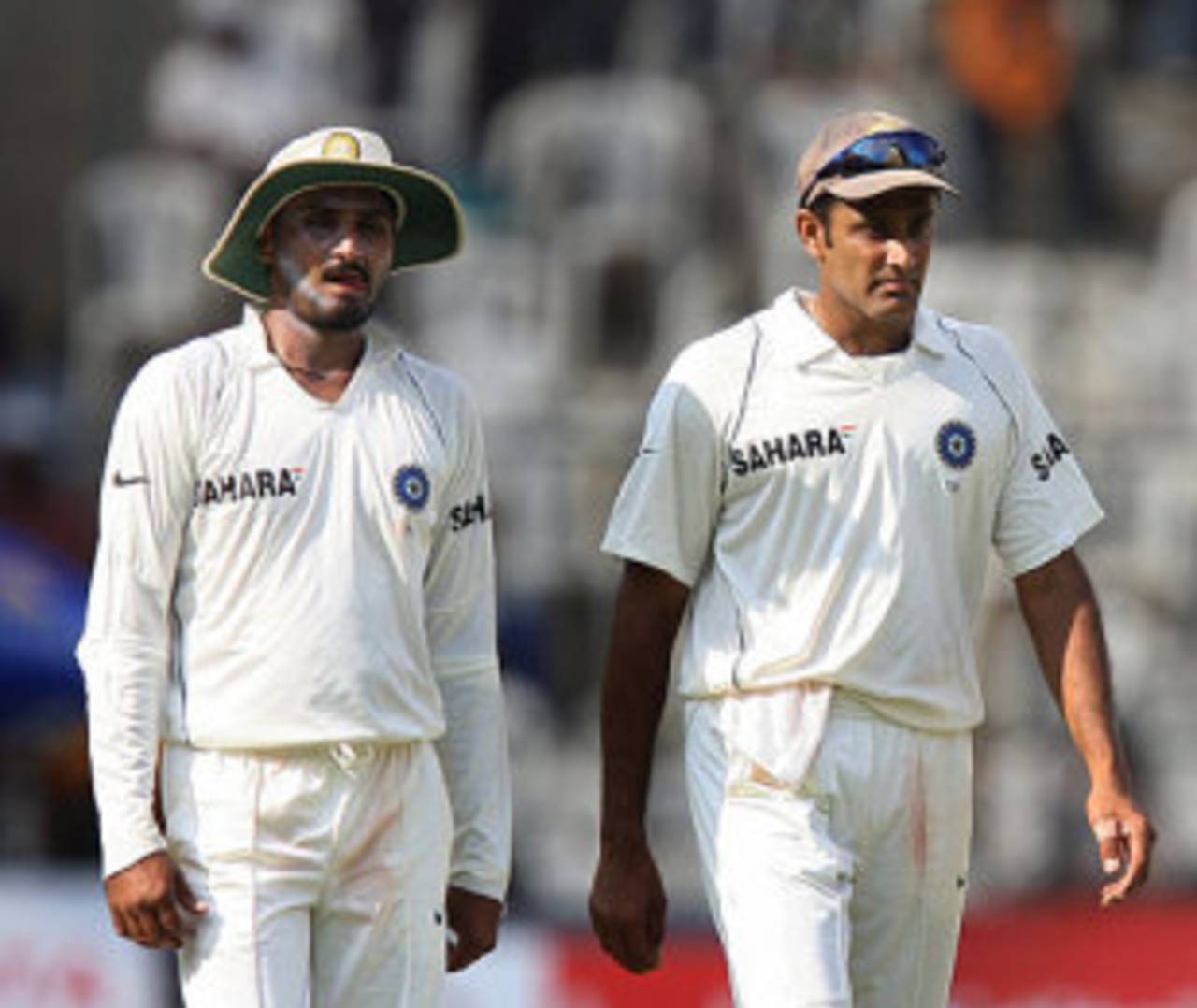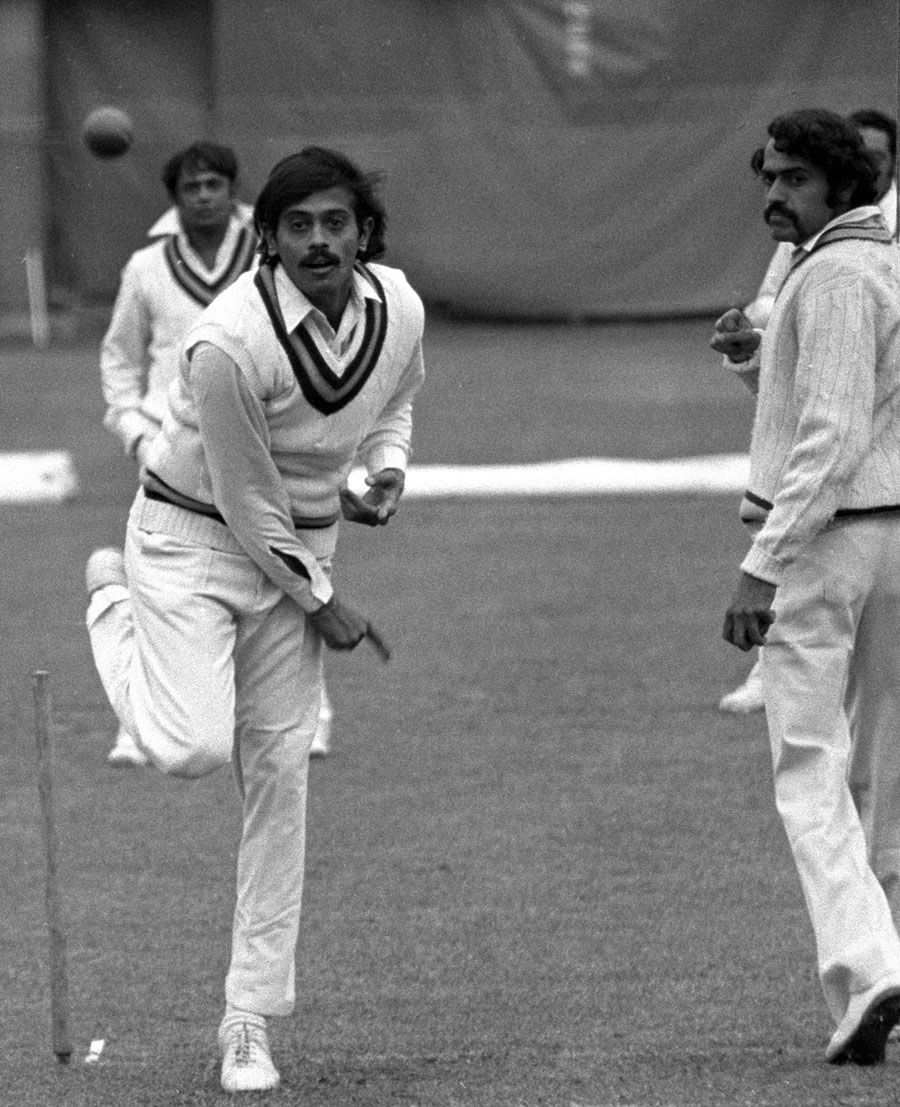Sirens of India
Picking two out of nine spinners means it's a choice between the romance of the past and the effectiveness of the present
Suresh Menon
06-Sep-2010

Harbhajan and Kumble: 501 wickets in 54 Tests they have played together • Getty Images
The stereotypical Indian batsman is all wrist and charm; the bowling cliché is the spinner, his flight luring batsmen to destruction rather in the manner of the Sirens in the adventures of Ulysses.
India's early attack was pace-oriented. Their first significant spinner Jamshedji was 41 when he made his debut in their first home Test (Wilfred Rhodes said that if he had the Indian's spin, no batting side would have reached 100). For the next Test CS Nayudu was chosen. Since then India have always had a host of spinners they could call upon.
Certainly between January 1962, when Erapalli Prasanna made his debut, and September 1983, when S Venkataraghavan played his last Test, there was an embarrassment of riches. One or the other of the spin quartet - Bishan Bedi and Bhagwath Chandrasekhar were the others - played in 98 Tests in that period. Between them they claimed 853 wickets, and attained mythical status.
The most recent spin combination is also the most successful. Anil Kumble and Harbhajan Singh have taken 976 wickets, 501 of them in the 54 Tests they played together. The choice will be between the romance of the past and the effectiveness of the present.
The candidates
 |
India's greatest match-winner, his role in 43 victories putting the 23 wins inspired by the spin quartet in perspective. Kumble claimed 288 wickets for 19 runs each at a strike-rate of 44 in those matches. Only the second bowler to claim all 10 in an innings, his 619 victims place him third in the overall list. Kumble was as much a presence as a performer: tough but fair, inspired as well as inspiring.
 |
Jim Laker once said his idea of heaven was to watch Ray Lindwall bowl from one end and Bedi from the other. Trevor Bailey wrote that "Bedi was much more than just another great bowler; he was above all an artist who brought to his craft a beauty that was timeless." His 266 wickets in 67 Tests meant that this was no beauty without cruelty, for Bedi teased the batsmen to their doom.
 |
His first 100 wickets came in just 20 Tests, as the offspinner used flight to make the batsman lunge for the ball that never arrived. His run up was deceptively simple, and fielders near the wicket swore they could hear the "whirr" of the ball as it approached the batsman. His decision to complete an engineering degree early in his career and then selectorial manoeuvres later restricted his appearances to 49 Tests.
 |
The legspinner's record of 149 wickets in 36 Tests did not do him justice in the years when India's catching was the worst in the world. He was the first Indian to claim all 10 wickets in a first-class innings, and with Vinoo Mankad formed the first pair of great spinners to operate together. "To me," wrote Garry Sobers who played against him, "Gupte was a better bowler than Shane Warne."
 |
One of few bowlers in history capable of producing the "unplayable" ball. He bowled his legspinners at medium pace, which was incredible given that his arm had been weakened by a childhood attack of polio. Played the crucial role in India's first wins in England and Australia. Continues to hold the Indian record for the most wickets in a series, 35, against England at home and has over 1000 first-class wickets despite not having played county cricket.
 |
The first Indian with a Test hat-trick, he had 32 wickets against Australia in a three-Test series. A modern offspinner at home in all three forms of the game, Harbhajan bowls the doosra and recently has developed the happy knack of getting runs in the lower half of the order. Chosen by Muralitharan as his successor, capable of matching his own aggregate number of wickets.
 |
One of only two bowlers (the other being Clarrie Grimmett) to claim a hundred Test wickets after making a debut in the 30s. Having to compete with Bedi for a slot restricted the younger Doshi's international appearances, but he was a world-class performer who would have walked into any other team.
 |
Good enough to play for India at 18, he was still playing 18 years later but had to contend with the more successful Prasanna through much of his career. He was the better batsman and an outstanding fielder at gully, and easily the fittest spinner of his generation. His 8 for 72 against New Zealand was the best in an innings among the quartet.
 |
Held India's aggregate record, 162 wickets, for years before Bedi relieved him of it. Figures of 8 for 55 and 4 for 53 inspired India's first Test win, against England. Mankad had a slightly round-arm action and his control was remarkable. Flight was his weapon, as a contemporary pointed out, adding, "to rely on the vagaries of the wicket would have been a reflection on the purity of his art".
We'll be publishing an all-time India XI based on readers' votes to go with our jury's XI. To pick your spinners click here
Suresh Menon is a writer based in Bangalore